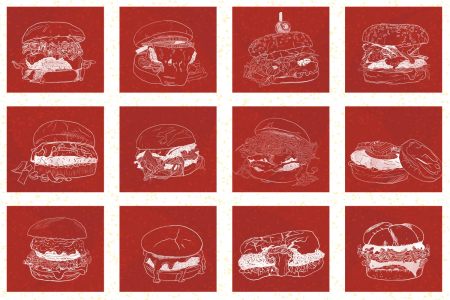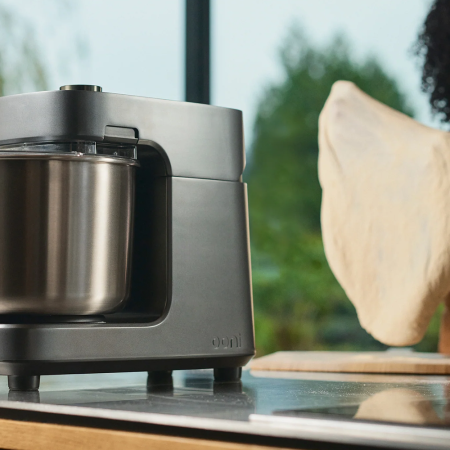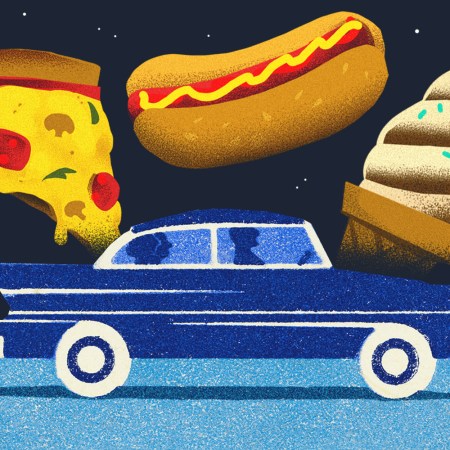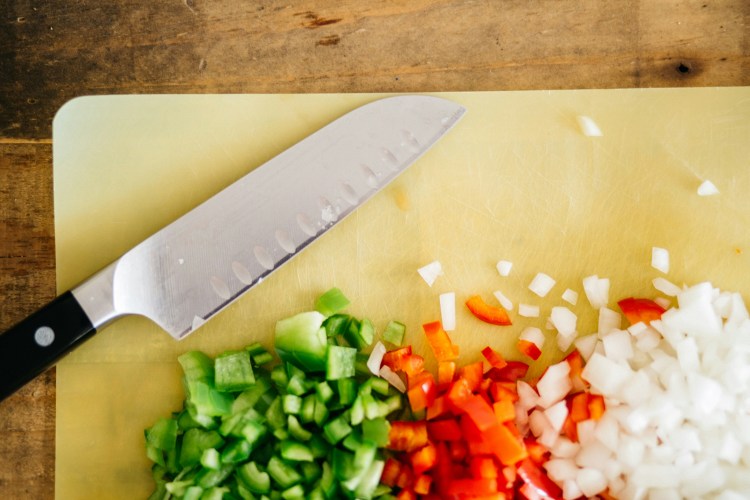I love pizza. So much, in fact, that I had a custom shirt made that says those three words. My love of pizza has led me down a six-year rabbit hole exploring and understanding the beloved food in all forms, shapes and cuts, picking up a podcast and a book deal in the process. It turns out, there are dozens of regional pizza styles, many of which I guarantee you haven’t even heard of yet.
Each style has its own rules, quirks and defenders. Some use cold cheese. Some don’t use cheese at all. Some are cut with scissors. All of them, however, reflect the places and people who created them, and that’s a story worthy of being told every time. Here, we’ll explore 10 of the more interesting regional styles, from the caramelized edges of a Detroit square to the cold cheese surprise of the Ohio Valley. These aren’t just variations on a theme — they’re expressions of local identity that are shaped by history, ingredients and a whole lot of strong opinions. Whether you’re a lifelong slice snob or just discovering there’s more to pizza than New York and Chicago, join me on this journey through the most craveable regional styles in the United States.

Chicago Deep-Dish
Chicago deep-dish pizza (yes, it IS pizza) gets a rough reputation outside of the Windy City. And, while it’s true that many locals prefer a tavern-style pie, a good deep-dish is unforgettable. First made in 1943 at what’s now called Pizzeria Uno, it’s one of the oldest pizza styles in the country. A few characteristics are non-negotiable with deep-dish, the first being the crust. It’s classically “short,” meaning it contains more fat than just about any other style, adding a unique crisp and flakiness to the texture when cooked in a large pan. Next, it will have an atypical order of ingredients; generally toppings are placed right into the crust, followed by the cheese and the tomatoes. “Stuffed” varieties will also have a thin layer of dough between the sauce and tomatoes, which keeps everything a bit more intact when cooking. The cheese is straightforward, with most using mozzarella or provolone. It’s also not uncommon to see the cheese pushed out into the pan, creating a deeply golden rim that may appear burnt but tastes like crispy, cheesy heaven. Finally, the tomato element is placed on top, which, when combined with the longer bake this pie requires, becomes caramelized, adding depth to the flavor. So, for all Chicago deep-dish haters, I encourage you to open your minds, unbuckle your belt and give this top-tier pie a try.

Detroit
Like Chicago deep-dish, Detroit pizza has been around for almost 80 years. Originating in 1946, Gus Guerra transformed a Sicilian pizza when he borrowed a square steel pan originally made to hold automotive parts on the assembly line, creating this pizza’s signature shape. No other style has grown in popularity during the past several years more than the Detroit, and for good reason — it’s ridiculously tasty. The crust is generally thick (up to an inch tall), but because of a long leavening process, it’s lighter than expected. Like the deep dish, this is a “sauce on top” pizza, which when paired with a longer cooking time allows the tomato flavors to develop. The cheese used for most Detroit pies is Brick cheese, a mildly-flavored cross between Jack cheese and white cheddar. Finally, it has a line of crisp cheese (called a frico to those in the know) around the crust, giving it a distinct flavor and texture. The result is a pizza that features a wide array of flavors and textures, with many fans eating the slices crust-first.

New York
No city on the planet is home to more styles of pizza than New York, with literal award winners in just about every category within a comfortable walk of each other. There is one specific pizza most think of when they envision a proper New York slice — that thin and floppy triangle of heaven. A stop along the evolution of the original Neapolitan pizza, it has a thin, hand-tossed crust (aided by the amazing water in the city), a straightforward tomato sauce and usually mozzarella cheese. Dubbed by some (me) as Manhattan-style, this is the pie that literally put pizza on this country’s radar, as most mega-chain pizzas are inspired by the New York slice. You’ll find them on just about every corner, sold by the slice cut from pizzas that are on average 18″ in diameter. It’s the kind of pizza you fold in half, eat on the go and somehow still remember years later. Equal parts convenience and craft, it’s as iconic as the city itself.
New Haven
The self-proclaimed pizza capital of the world, New Haven, CT is home to a wonderful pizza culture. Specifically, New Haven-style pizza has been around for almost 100 years, and the pies are largely unchanged. Similar to a New York slice, a New Haven pizza features a thin crust that’s cooked in a wood-fired oven, which gives the style its signature charred crust and chewier texture. There are a few key variants, with the most popular being an “apizza.” Pronounced as “ah-beetz,” this pizza has a thin layer of tomato sauce, a pinch of oregano and just a sprinkling of Pecorino Romano cheese. Another popular combination is the white clam pie, a garlic and oil base topped with oregano, Pecorino Romano, littleneck clams and occasionally bacon. Like the apizza, the contrast of flavors and textures makes it unforgettable.
A Guide to the Most Beloved Regional Burger Styles in the United States
Which is your favorite?St. Louis
On the opposite end of the spectrum are the pizzas slung in St Louis, MO. They are cracker-thin and feature unique sauces and cheeses. Akin to a tavern-style, a St. Louis crust is lightly leavened and drier than just about any other style. The tomato sauce is sweeter than most other pizzas because of the heavy use of tomato paste that’s spiked with a heavy amount of oregano, giving the overall flavor a noted boldness. The pie is finished with a white cheese called Provel, a processed combination of cheeses like Swiss and cheddar, finished with a bit of liquid smoke. It’s very melty and distinct, with an oddly sweet and slightly bitter flavor thanks to the smoke element. The resulting pizza is a competition of bold flavors that is, admittedly, more of an acquired taste than other styles in the country.
Ohio Valley
Arguably the most controversial pizza style, Ohio Valley pizza has been turning heads since the mid-1940s and is mostly found in Eastern Ohio, Western Pennsylvania and West Virginia. Invented in Steubenville, OH, Primo DiCarlo made the first Ohio Valley pizza when he opened DiCarlo’s Famous Pizza, which is still in business today. The base of an Ohio Valley is a square, breadier crust close to a classic Italian bread. The sauce is similar to a pasta sauce or Sunday Gravy, oft featuring onions and green peppers. It’s parbaked with just the dough and a scant amount of sauce, just enough to prevent the crust from drying out. The pizza is then removed from the oven and held until service. When finished, it’s topped with more sauce and a pinch of cheese. Once cooked, it’s topped with cold, uncooked shredded mozzarella and provolone cheeses. Cold pepperoni and banana peppers are also typical Ohio Valley toppings. The resulting pizza is a dichotomy of flavors and textures — the cold, soft cheese against the warm, crisp dough creates a one-of-a-kind pizza experience.
Old Forge
Dubbed the “Pizza Capital of the World” by the locals, Old Forge, PA, a few miles southwest of Scranton, proudly lays claim to a completely distinct style of pizza. These rectangular “trays” are often described as a cross between pan pizza and lasagna, baked in metal trays and served by the “cut” rather than the slice. Old Forge pizza features a thick, soft, spongy crust, somewhere between focaccia and a dinner roll, with a bottom that’s crisped up from a generous oiling of the pan. The sauce tends to be mildly sweet and oniony, both to cut through the heavy amount of cheese to follow, which is a blend unique to the region. It typically involves American, mozzarella and cheddar, which gives it a creamy, rich melt and a mild sharpness. Red and white are the two main varieties — red is a more typical pizza, while the white is a cheeseless garlic and herb pie often topped with onion or broccoli. The comfort food vibes are strong here, and each pizzeria in Old Forge guards their blend like a family heirloom.
Colorado Mountain
If you ever wanted a pizza to double as a meal and dessert, Colorado Mountain-style is your champion. This hearty pie was made famous by Beau Jo’s, and it’s known for two things: a towering, braided wheat crust and its sheer weight. These pizzas are thick-crusted monsters, often weighing in at several pounds and sold by weight, not by the slice. The dough itself is sweetened with honey, giving the crust a slight nuttiness, and those in the know finish their leftover crust by dipping it in honey. The toppings are as generous as the crust, often layered an inch thick with everything from classic meats to regional vegetables like Hatch green chiles. It’s a fork-and-knife pizza through and through, built to fuel a day on the slopes. Think of it as the Rocky Mountains’ answer to deep dish, only sweeter, puffier and a bit more laid-back.

Quad Cities
Quad Cities-style pizza (primarily found in the Quad Cities on the border of Illinois and Iowa) is one of the best kept secrets in regional pizza and has several characteristics that make it truly shine. It starts with the dough, which is dark, nutty and a bit sweet thanks to the use of malt syrup. The crust is hand-stretched into an oblong oval and topped with a spicy tomato sauce infused with cayenne and red chili flakes. Instead of slices, the pizza is scissored into strips, which gives it its iconic long, narrow pieces. The cheese is typically a blend of mozzarella and something sharper like white cheddar, and toppings (house-made ground sausage is a must) are placed under the cheese, not on top. That sausage, by the way, is spiced differently than your typical Italian sausage, closer to a breakfast blend with a heavy hand of fennel and pepper. The resulting pie is chewy and spicy with just enough sweetness to keep you coming back for more.
Grandma
Despite the humble name, grandma-style pizza has become a cult favorite far beyond the boroughs. This is a true homestyle pizza, traditionally baked in a rectangular sheet pan in someone’s kitchen, usually without a pizza stone or steel. It has a thin, crisp bottom and a slightly chewy middle, thanks to a shorter rise time and a healthy dose of olive oil in the pan. The dough is pressed out by hand and topped with fresh mozzarella, a garlicky tomato sauce (often applied in spoonfuls or stripes like the Detroit) and a final drizzle of olive oil. The edges get beautifully browned and crisp, almost like the corner of a great lasagna. Simpler and thinner than a Sicilian but with more character than a standard thin crust, a proper grandma pie delivers massive flavor and texture in a no-frills slice. It’s the kind of pizza that tastes like it came from your Nonna’s oven, and that’s exactly the point.
Every Thursday, our resident experts see to it that you’re up to date on the latest from the world of drinks. Trend reports, bottle reviews, cocktail recipes and more. Sign up for THE SPILL now.

























